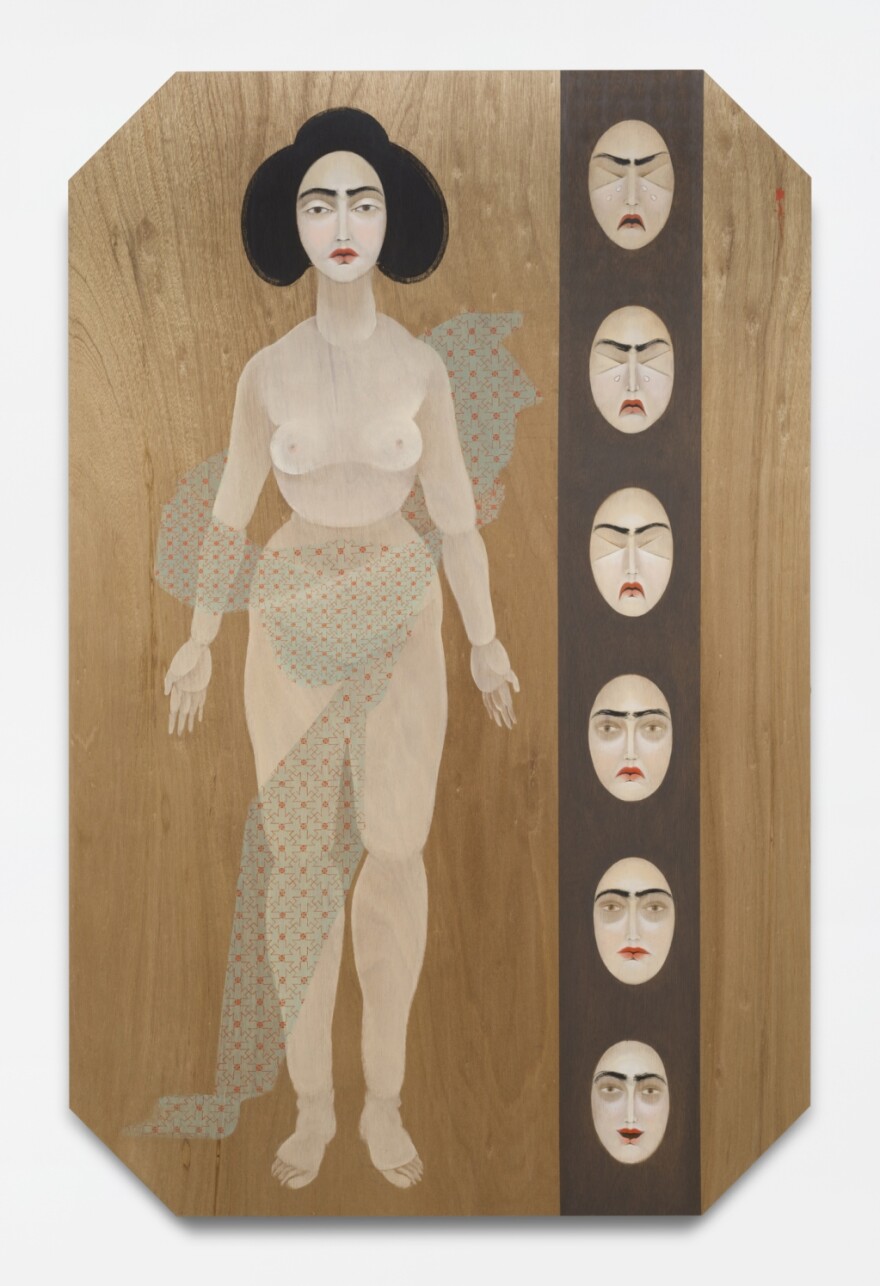Many St. Louisans have been watching the Contemporary Art Museum closely since an exhibition last fall was viewed as offensive to black people, particularly women.
But an upcoming display could leave CAM visitors with a better impression. On Sept. 8, the museum opens four shows, including one featuring the work of Mickalene Thomas, an African-American multimedia artist.
Local art collector Adrienne Davis said Thomas’ images of black women stand in stark contrast to those of Kelley Walker, a white male artist whose Sept. 2016 exhibition outraged many visitors.
“I think they’re extraordinary and wonderful,” Davis said of the pieces Thomas creates. “There is a beautiful intimacy to them.”
Framing an exhibition
Walker’s exhibition “Direct Drive” included a floor-to-ceiling image of a scantily clad black woman in a “King” magazine pinup, digitally smeared with toothpaste.

“The ‘King’ piece was, I think, the opposite of intimacy; it was a pornographic gaze,” Davis said.
Much of the controversy over Walker resulted from his talk with museum patrons. Many felt he was unable to articulate a meaningful framework for his images, and that CAM also failed to put the work in context for the public.
People will be curious to see how the institution will contextualize Thomas’ display, “Mentors, Muses, and Celebrities,” Davis said.
“I think people are looking at not only, ‘Gee, now we have Mickalene Thomas up,’ but it’s also ‘What are the events, what is the programming, what is the discussion, who is speaking, who is invited into the space?’” Davis said.
CAM plans an Oct. 6 artist talk; a party in which visitors are encouraged to dress up as their favorite mentor, muse or celebrity; and a Metro Trans Umbrella Group performance inspired by Thomas's video work “Do I Look Like a Lady?”

Thomas’ exhibition will include film, video, photography, and installation work. She will spend a week at CAM creating a 60-foot-long collage using photos and found film footage from the film “The Color Purple.”
CAM Director Lisa Melandri views the Thomas and Walker exhibitions as completely separate.
“Mickalene needs to be looked at as her own artist and not … in response to anyone else,” Melandri said.
'I don't trust mainstream institutions'
Since the Kelley Walker exhibition, in St. Louis and in other U.S. cities there has been intense focus on who is making art about whom. Last spring, a white artist’s abstract painting of Emmett Till’s mutilated body in his coffin, shown at The Whitney Museum in New York City, sparked demands for its removal.

But Adrienne Davis, who is on the board of the St. Louis Art Museum and is a Washington University law professor, said the identity of the artist doesn’t always matter.
“It’s actually not about the identity of the artist; it’s about the objects themselves,” Davis said. “There’s a lot of art by black people that I find distasteful,” she said.
Davis points out that even prominent black artists are criticized for making work about black people. Renowned African-American artist Kara Walker has dealt with censorship on several occasions, including a 1999 incident in which her work was removed from the Detroit Institute of Art.
“I am just not for censorship,” Davis said.
As much as she was not a fan of Kelley Walker’s work, Davis didn't want to see it removed.

“I don’t trust mainstream institutions enough to give them the power to decide whose work gets shown and whose work doesn’t get shown — including CAM, including Washington University,” Davis said.
CAM’s fall exhibitions also include “Acts of Reparation” by Iraqi-born artist Hayv Kahraman, who explores the body, and the idea of diaspora, or colonies of people living outside their ancestral homes.
Two more shows in the lineup are Zlatko Ćosić’s “A Murmuration,” a video to be projected on the CAM building, and “Hedge,” a courtyard installation created from local trash.
Follow Nancy on Twitter: @NancyFowlerSTL








